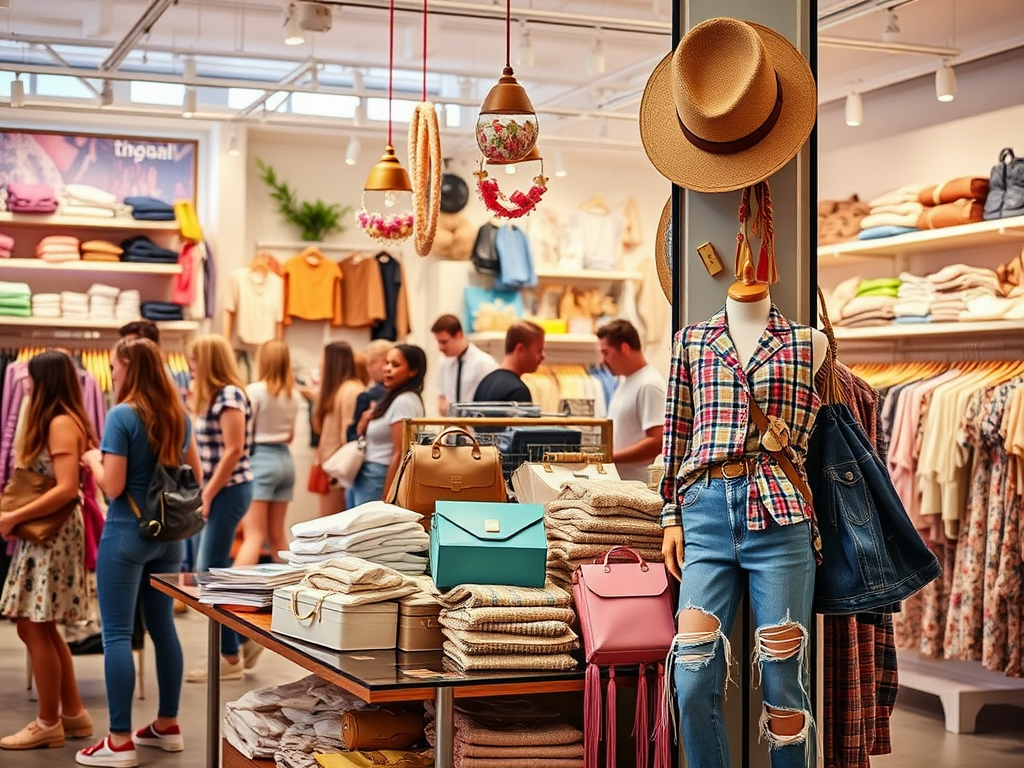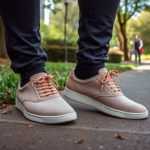The Urban Outfitters Business Model: How Do They Stay Profitable?

Urban Outfitters is more than just a retail store; it’s a cultural phenomenon that has effectively connected with a vibrant, youthful demographic. As rapidly evolving trends shape the retail environment, understanding how Urban Outfitters has carved out its niche becomes essential for anyone interested in the dynamics of modern business models. Their approach uniquely combines lifestyle branding with diverse product offerings, integrating both online and offline strategies to optimize consumer engagement. This article will delve into the mechanisms that help Urban Outfitters maintain profitability while staying relevant in an ever-competitive market.
One eye-catching aspect of Urban Outfitters is its understanding of the unique brand positioning it has established. With a firm focus on appealing to millennials and Gen Z, the brand has evolved from a traditional retailer to a lifestyle curator. This transformation is pivotal because it directly influences the target consumer’s perceptions and purchasing behaviors. By enveloping their products in a broader lifestyle context, Urban Outfitters appeals to the intrinsic values of its young audience, making each purchase feel more meaningful. The key lies in their ability to diversify while still resonating with the core ethos of their consumer base, growing the brand’s appeal exponentially.
Unique Brand Positioning

Urban Outfitters successfully capitalizes on the desire for self-expression among young adults. Their product range transcends the mere sale of clothes, as they offer curated collections that speak to the artistic and aspirational aspects of youth culture. The brand embodies a lifestyle, supported by creative marketing strategies that tell compelling stories, connecting emotionally with customers. This approach is complemented by their visual merchandising in-store and online, utilizing a playful, eclectic aesthetic that attracts attention. Through carefully crafted branding, Urban Outfitters positions itself not just as a store, but as a community catalyst for creativity and expression.
Urban Outfitters employs storytelling in its marketing campaigns, enhancing customer relationships. For example, seasonal ads and social media posts often highlight personal narratives that resonate with experiences shared by their consumers. This is achieved through user-generated content, influencer partnerships, and curated content that brings authenticity to their storytelling. Such strategies deepen customer loyalty, creating a virtual tribe that shares common interests and values, further solidifying Urban Outfitters’ position as a lifestyle brand rather than just a retailer. The blending of narrative and product turns ordinary purchases into profound experiences.
Diverse Product Range

The variety of products at Urban Outfitters is vast, spanning categories like apparel, home goods, and accessories. This diversity not only appeals to a broader audience but also enhances the shopping experience, encouraging cross-selling opportunities. The brand’s ability to adapt to shifting consumer preferences is evident in its regularly updated inventory, which features everything from vintage-inspired clothing to contemporary home decor items. Moreover, the appeal of having many options ensures that customers return for new finds and discover unexpected categories that pique their interest.
Limited Edition and Exclusive Collaborations
In a world where exclusivity often breeds desirability, Urban Outfitters cleverly applies this principle through limited releases and collaborations. These strategies create a sense of urgency among customers, which, coupled with distinctive and innovative designs from featured artists, drives sales considerably. Shoppers know that these limited editions won’t last long, and this often propels them to make purchases sooner rather than later. When Urban Outfitters collaborates with well-known designers or influencers, it not only expands their reach but also builds brand prestige, creating a win-win scenario for both parties.
| Product Category | Examples | Target Audience |
|---|---|---|
| Apparel | Vintage tees, jackets, and dresses | Young adults (18-30) |
| Home Goods | Furniture, decor items, and kitchenware | First-time renters and homeowners |
| Accessories | Unique jewelry and bags | Trendsetters |
While Urban Outfitters thrives on its diverse portfolio, its online and offline retail strategies are equally critical to its success. With a well-designed website and a robust e-commerce platform, they ensure easy access to products, enhancing convenience for customers. Post-pandemic shopping habits have transformed, and an effective e-commerce presence is essential for retail success. However, Urban Outfitters also places significant emphasis on its brick-and-mortar locations, which act as experiential spaces where customers can engage with products personally.
Integration of Omnichannel Experience
Urban Outfitters excels in providing a seamless omnichannel experience that combines the advantages of both online and physical shopping. The use of social media platforms as marketing tools drives significant traffic to both their website and storefronts. Additionally, features such as Click-and-Collect allow consumers to shop online and pick up in-store, merging the convenience of e-commerce with the immediacy of physical retail. This integrated approach not only enhances customer satisfaction but also maximizes revenue opportunities by capturing sales across multiple channels.
Ethical and Sustainable Practices
In today’s retail landscape, ethical and sustainable practices have become more than just niche trends; they are expectations among conscientious consumers. Urban Outfitters has recognized this shift and is actively working towards more sustainable operations. Their commitment to ethical sourcing and production methods strengthens brand integrity, resonating particularly well with eco-aware younger generations. This focus on sustainability is integral to maintaining competitive edge and relevance in a market where consumers increasingly prioritize brands that align with their values.
Moreover, Urban Outfitters participates in various community initiatives that foster goodwill and deepen consumer trust. Their efforts range from supporting local artists to engaging in charitable programs that address environmental issues. This engagement not only contributes positively to the community but also generates buzz around the brand, creating a favorable image in the eyes of consumers. As customers relate to these values, they are more likely to become loyal patrons, reinforcing the brand’s profitability through ongoing support.
Financial Overview
Understanding the financial health of Urban Outfitters provides insights into its sustained profitability. Key metrics reveal a story of growth, as the company adeptly navigates a competitive landscape through strategic pricing, minimizing overhead costs while maximizing revenue streams. They’ve implemented cost management strategies that ensure inventory turns remain healthy while aligning production with consumer demand. Financial agility allows Urban Outfitters to reinvest in areas that spur innovation, such as new product development and technology improvements.
By optimizing its supply chain and inventory management, Urban Outfitters can balance cost structures more effectively. Streamlined systems ensure efficient distribution, reducing waste and lowering costs. Further, economies of scale allow the brand better pricing and negotiating power with suppliers, bolstering profitability. This calculated approach to cost management is instrumental in improving the bottom line, allowing Urban Outfitters to remain competitive while still focusing on quality and customer satisfaction.
Conclusion
In summary, the Urban Outfitters business model is a robust framework that combines youth-centric branding, diverse product offerings, and ethical practices to stay profitable in a dynamic retail landscape. By tapping into lifestyle branding and reinforcing customer relationships, they cultivate loyalty and community. Through careful agility in financial structuring and supply chain management, Urban Outfitters showcases not only how to stay afloat but also to thrive in this challenging market. As the retail industry continues to evolve, Urban Outfitters’ practices could provide valuable lessons for others looking to adapt and succeed.
Frequently Asked Questions
- What is Urban Outfitters known for? Urban Outfitters is known for its trendy clothing, accessories, and home decor, targeting young adults with a unique lifestyle brand.
- How does Urban Outfitters stay competitive in the retail market? They stay competitive through a combination of unique brand positioning, a diverse product range, and effective online and offline strategies.
- Are Urban Outfitters’ products sustainable? Urban Outfitters has made commitments towards sustainability, incorporating ethical practices in their sourcing and business operations.
- What demographic does Urban Outfitters target? Their primary audience is millennials and Gen Z consumers seeking trendy and unique lifestyle products.




